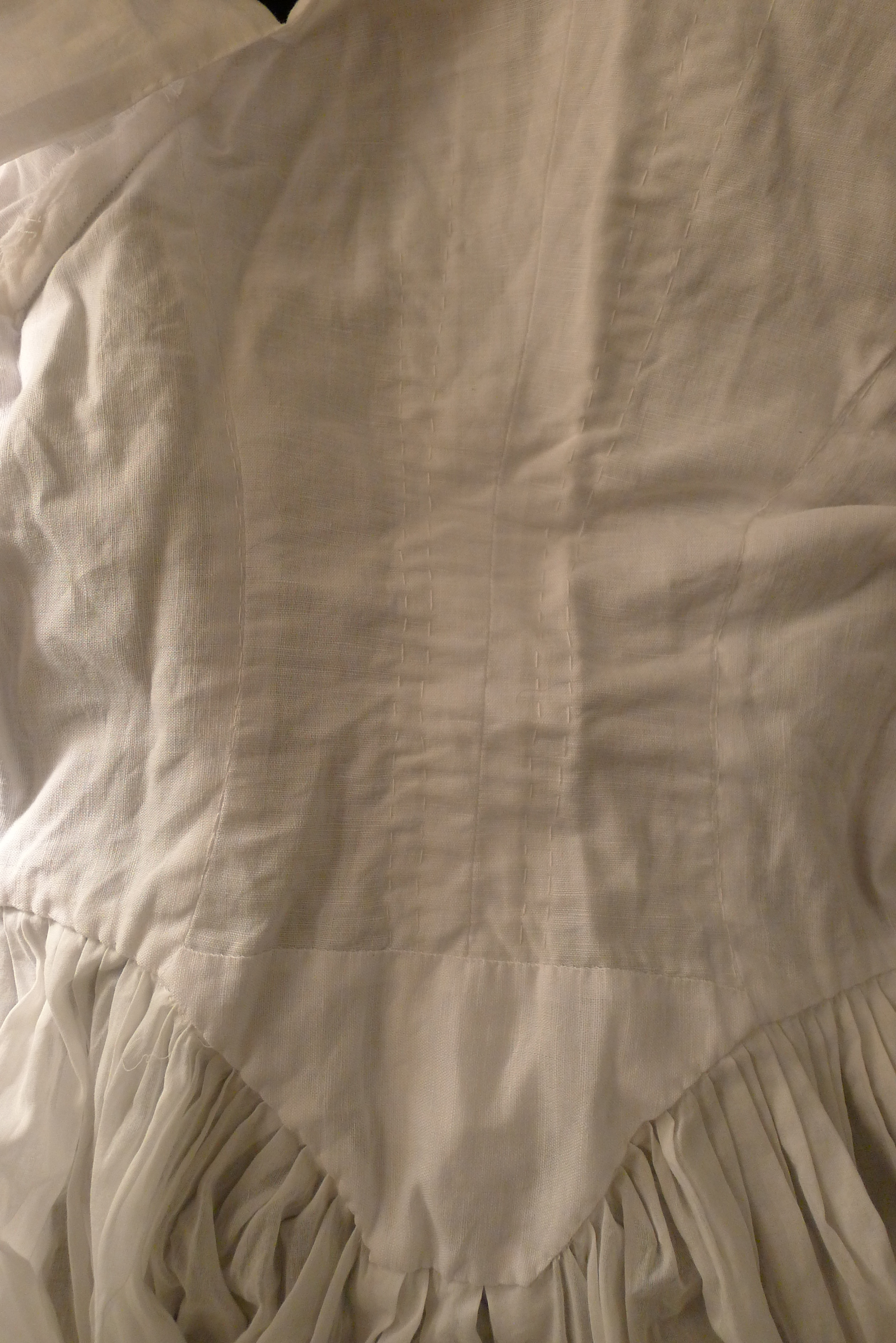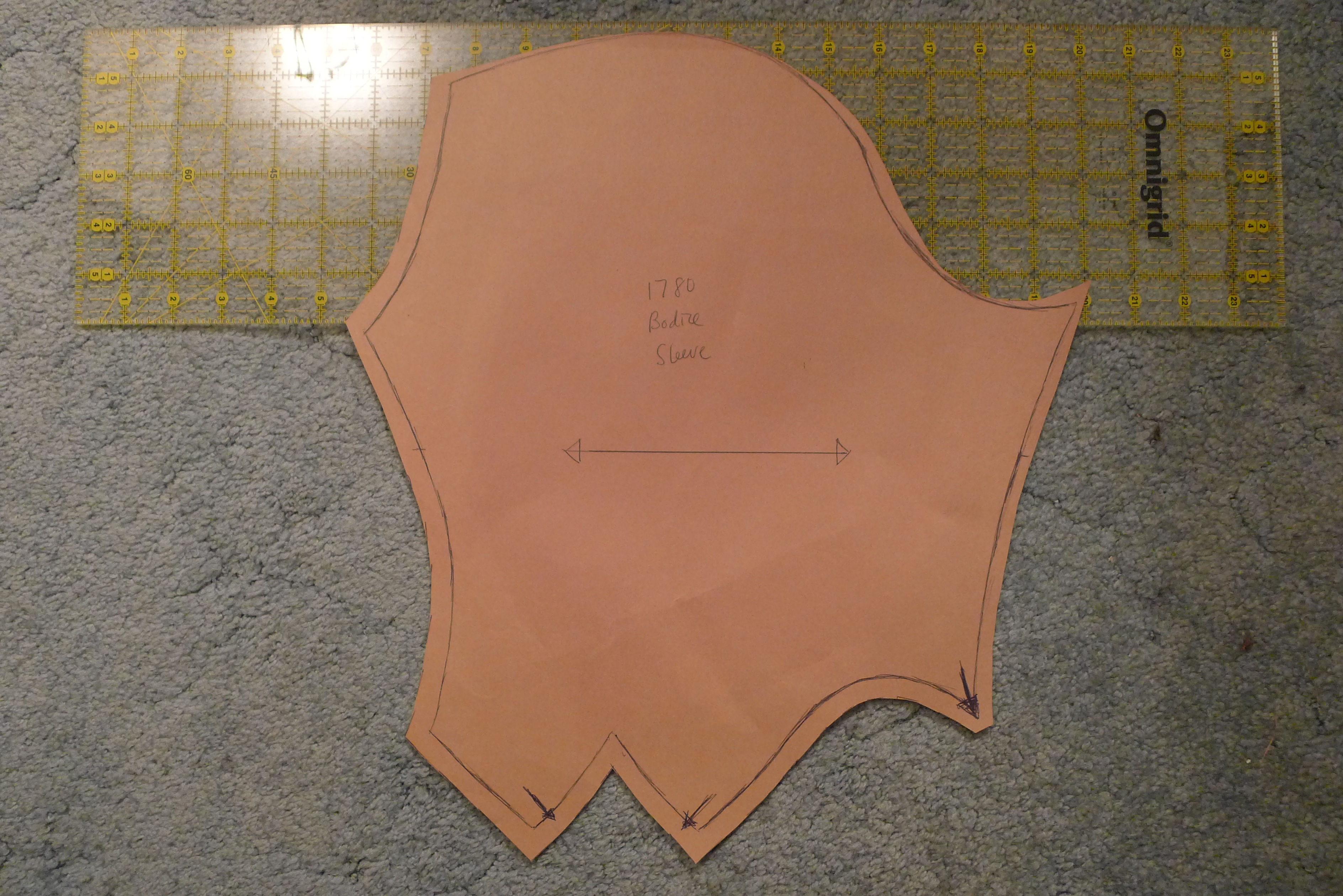Entry tags:
An oldie, but a goodie
I never really posted much about the white voile round gown that I made last year. I ended up really liking it. I decided to make it as an English gown, with the pleats on the back extending into the skirts (en fourreau is the term most costumers use). It looks good, but I accidentally made a mistake with it and had the pleats sewn down to the bottom of the lining, which meant that I couldn't turn the lining edge in at the bottom to sandwich in the top of the skirts. So I ended up adding a piece to the lining at the bottom of the CB to fix it and it's very unobtrusive. Problem solved! And I took a couple quick pictures of the back pleats yesterday night because I happened to have a little bit of time on my hands, outside and inside.


It's too bad I don't have more occasions to wear it. It's such a great dress for summer and 18th century pastoral-ness.
The real reason I was taking pictures was because I realized I didn't end up taking any of my final bodice pattern, even though I took pictures of the fitting process. I find it's always helpful to see what other people's pattern shapes look like and how they work. (A reminder that this was originally diagram XXII from 1775-1780 in Cut of Women's Clothes by Norah Waugh.) So here are some pics with my quilting ruler for scale. The first has all the bodice pieces, including a 1-piece back and a 2-piece back. (I used the 1-piece for this gown and the 2-piece for my yellow gown). I'm actually planning to make a couple more small adjustments to the angle around the back shoulder and to the strap to get a more accurate look for c.1780. The second pic is of the sleeve, but the 3 small pleats at the top of the sleevehead aren't marked. All arrows are places where things need to be extended a bit. If it needed to be smaller, I just cut into the paper pattern itself, which is why the lines are a bit wonky compared to the actual outline of the pattern pieces.




It's too bad I don't have more occasions to wear it. It's such a great dress for summer and 18th century pastoral-ness.
The real reason I was taking pictures was because I realized I didn't end up taking any of my final bodice pattern, even though I took pictures of the fitting process. I find it's always helpful to see what other people's pattern shapes look like and how they work. (A reminder that this was originally diagram XXII from 1775-1780 in Cut of Women's Clothes by Norah Waugh.) So here are some pics with my quilting ruler for scale. The first has all the bodice pieces, including a 1-piece back and a 2-piece back. (I used the 1-piece for this gown and the 2-piece for my yellow gown). I'm actually planning to make a couple more small adjustments to the angle around the back shoulder and to the strap to get a more accurate look for c.1780. The second pic is of the sleeve, but the 3 small pleats at the top of the sleevehead aren't marked. All arrows are places where things need to be extended a bit. If it needed to be smaller, I just cut into the paper pattern itself, which is why the lines are a bit wonky compared to the actual outline of the pattern pieces.



no subject
no subject
no subject
no subject
no subject
We should schedule next summer's 18th century picnic around whenever you can be here, then you can wear this again!
no subject
I have no idea what my year will look like next year because I should be graduating and finding a job. But that would be really fun and I will keep you updated with any travel plans!